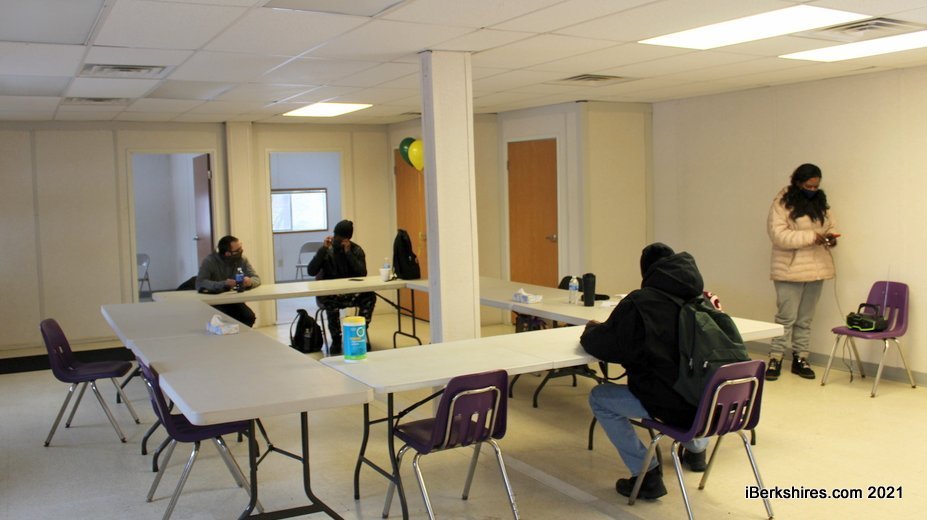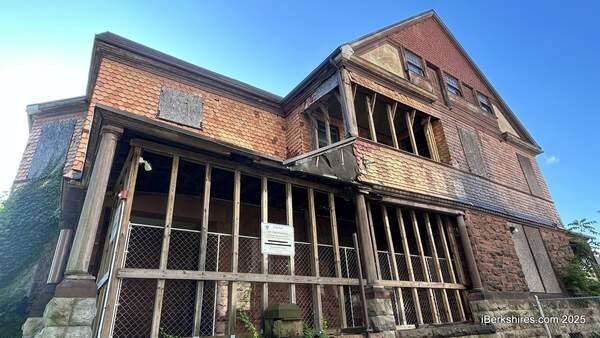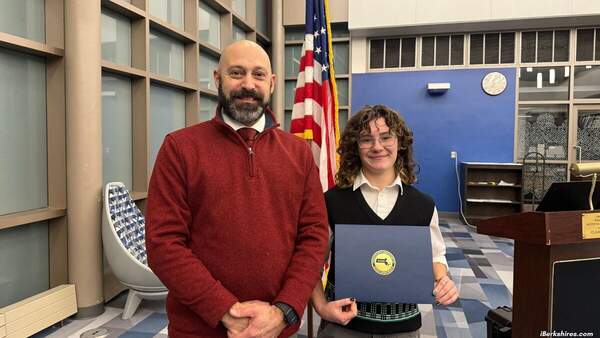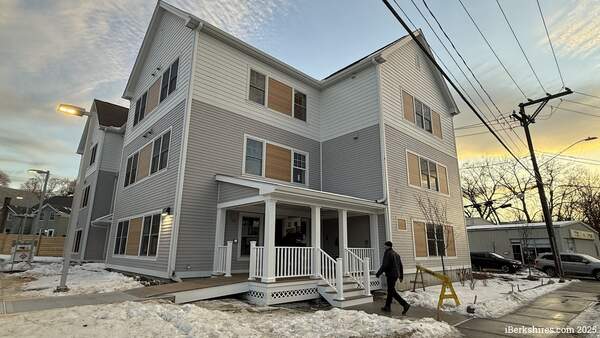
Pittsfield Warming Shelter to Close at the End of the Month
PITTSFIELD, Mass. — The city's warming shelter located at the Christian Center will be closing at the end of May after opening last year.
Its last day of operation will be on May 27 and the structure itself will be removed on June 3.
"I just wanted to make you aware that the warming shelter is closing the first week of June," Director of Community Development Justine Dodds reported to the Homelessness Advisory Committee on Wednesday.
"It was put in place in February, as you all remember, 2021 when we were in the middle of the pandemic and there was a lack of public spaces for people to do exactly what we've been talking about, just to get warm, charge their phone, just rest,"
"And so the Christian Center has housed that for us, ServiceNet has been staffing it on a regular basis and it was a temporary trailer so the time has now come for that to be removed."
The 24-by-60 foot trailer was a partnership between the city, the Christian Center, and ServiceNet. Opened in February 2021, it offered housing-insecure folks a warm place to reside in the hours that ServiceNet's shelter at the former St. Joseph's High School was closed.
Christian Center Food Director Karen Ryan assured the panel that the center will continue to support the community with its services, as it has throughout the entire pandemic.
A large tent has been set up on the property with tables and chairs and there are usually 50 to 70 people at the center for lunch, which is also available as takeout. A boutique that offers both clothing and housewares is available without an appointment and the center's food pantry operates Monday through Friday.
Referral services are also offered.
"Basically we were the hub. Up until like two years ago, the Christian Center was open and people would leave the shelter and come here, so our hours are a little different. They are limited at this time, but we're still here," Ryan said.
She reported that there are a few people they have concerns about and are working to find resources for a senior woman who uses a walker so she can get into an assisted living situation.
"The shelter's leaving but we are still here and we're still continuing services and, anything that's needed, we're here five days a week," Ryan asserted.
During the meeting, she also reported that the Christian Center is working with an architect for a building on the property to house offices for agencies, showers, washers and dryers, and a place for people to be able to get mail.
"It's going to be a few years but that's that's one thing, that's our dream is to add on to the existing building of the Christian Center, where we'll be day services, be working hours like nine to five where they'll be able to come," Ryan explained.
"Agencies can have offices, they can take showers, our food pantry would move over there, so just to put that out to everybody that's our goal, that's what we're working on right now."
The committee also got a presentation from Judi Barrett, a planner hired from the Berkshire Housing Development Corp., on a housing resource center that is in the works.
Members had previously agreed that they would like to see the city adopt a facility similar to Behavioral Health Network's "The Living Room" in Springfield, which is a one-stop place for showers, sleep, restrooms, food, and social services.
This was after they were asked to identify service gaps in the city's response to homelessness and bring recommendations.
Barrett said the emphasis is going to be on housing services for people who are experiencing or are at risk of homelessness. There also will be an integration with other service providers who frequently serve those populations.
The planners have spoken with a number of application service providers, she said, and has also spoken to people who experience homelessness to see what would be helpful to incorporate into the center.
At two public meetings, people expressed the need for a place to store things, secure lockers, and a place to feel safe, warm, and housed while they are applying for jobs and looking for housing.
Right now, all sources of input are being gathered to provide a recommendation to the BHDC, which will then make a decision on what the space will be. A request for proposals (RFP) will then be issued.
A couple of committee members believed that there was some miscommunication in the planning process of the center.
Christine Haley of the state Department of Mental Health recognized that the committee has talked about a Living Room model and said she does not see a housing resource center as fitting that description.
"I think a lot of the homeless population really struggles with mental health and substance misuse and I know one of the things that we struggle with here in the Berkshires is staffing programs, so I think like if we are going to go into this direction of having this type of program you know, I mean, it's just going to limit other programs depending on what your [request for response]] says," she said.
"I would just want to be sure that you're RFR has the components of everything that this group had has been talking about and working on and I don't know, maybe I'm wrong to say this, but I feel like we all probably should have been involved in talking with you, but that's just me."
Erin Forbush, director of operations at ServiceNet, said the proposal developed out of a need that was seen and that it is called a housing resource center because they don't know what will come of the ideas that have been gathered.
"So I think it's everything that you mentioned, Chris," she said.
"So people would be able to come in, grab a coffee, heat up a meal in the microwave, possibly a shower, possibly just rest."
Ryan, who said she hadn't heard about the proposal until that day, pointed out the Christian Center's efforts and said that she wants to make sure there were not two facilities doing the same thing.
Dodds disclosed that she did help convene a meeting with folks that will be using the service to get their input.
"In fairness to Berkshire Housing Development, who really helped us try to identify people we should speak with, there's always somebody we don't get," Barrett said.
"That's why we do something like this because we don't know what we may be missing so I appreciate the input and we're happy to follow up with anybody but we don't know all the people we should be speaking with until we start interviewing people and we've interviewed a number of people."
Tags: homeless,















